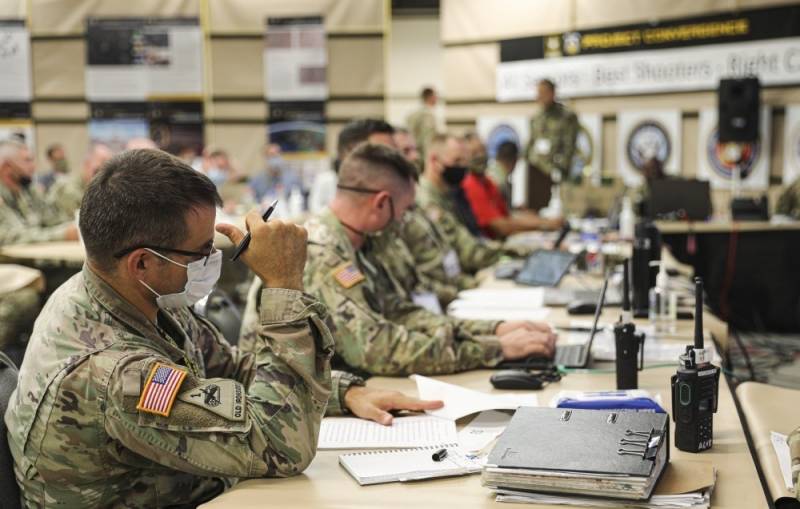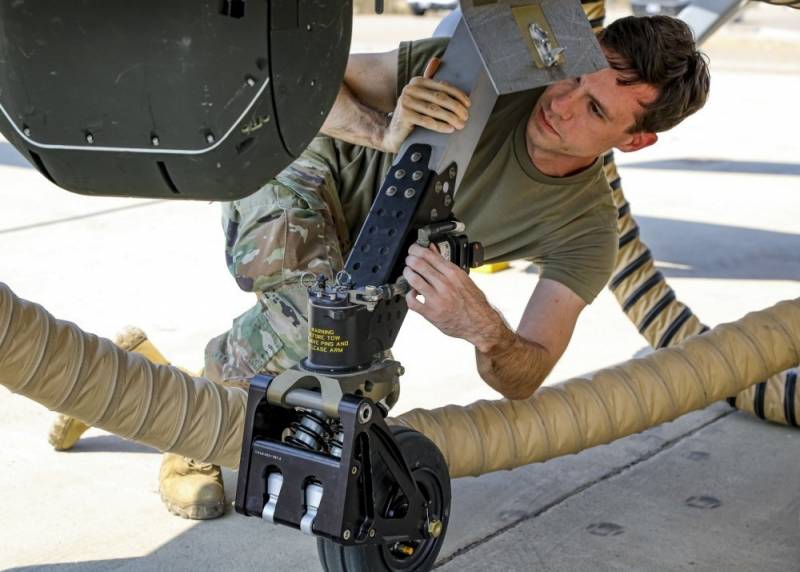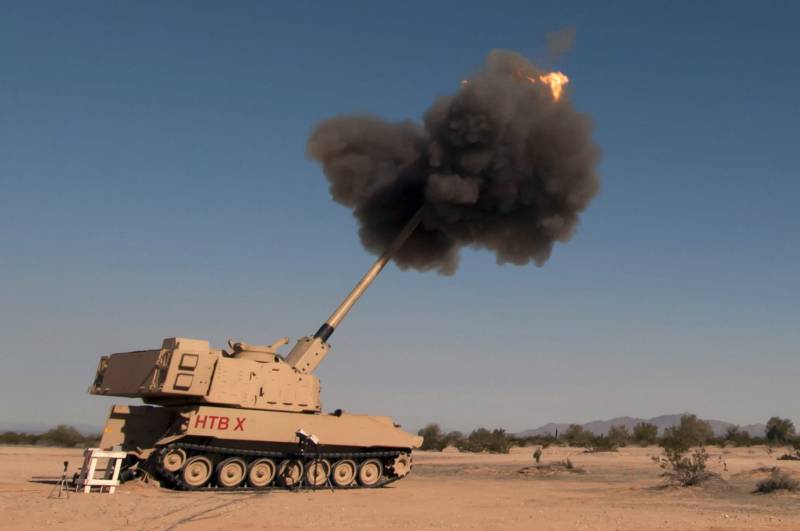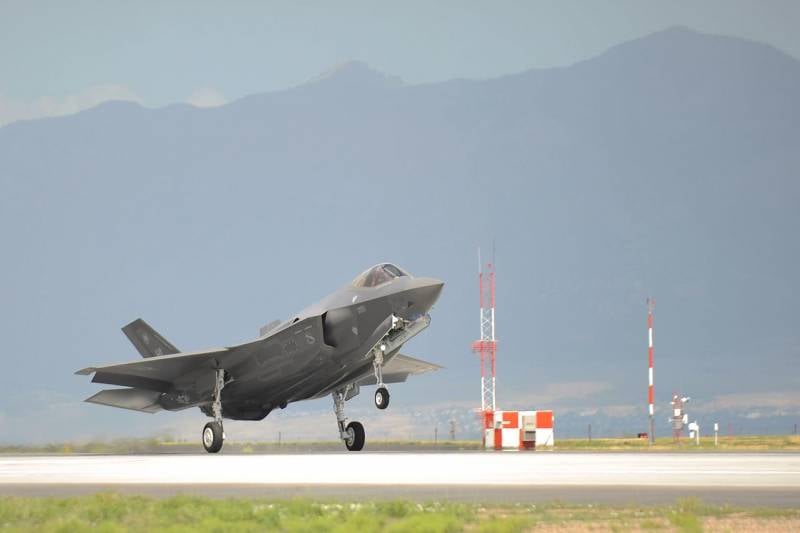Project Convergence: a promising command and control system for the Pentagon
The Pentagon is currently developing the Project Convergence program. Its goal is to create new communications and command and control facilities capable of integrating existing systems into a highly efficient and productive network. The emergence of such a control system is expected to simplify the exchange of data within interspecific groupings and increase the efficiency of their combat work.
Prerequisites for the emergence
At present, all branches of the armed forces and branches of the US Armed Forces are equipped with automated tactical control systems (ACS TZ), which ensure the reception and processing of data with the subsequent issuance of orders. As development progresses, fundamentally new systems are introduced, incl. based on artificial intelligence, dramatically expanding the combat capabilities of troops.
However, there is a serious problem. Different military structures use their own automated control systems, which are often incompatible with each other. This seriously complicates the interaction of different types of troops. For example, the transfer of data from the Target Intelligence Data (TIDAT) control system to the Advanced Field Artillery Tactical Data System (AFATDS) artillery complex must be done manually.
As a result, the interaction of different types of troops becomes more difficult. In addition, various difficulties arise associated with the integration of individual TK ACS into general operational-strategic contours. It is believed that such problems of control systems do not allow to fully realize the potential of modern weapons and equipment.
Project "Convergence"
To get rid of current shortcomings and gain new opportunities, the Convergence project is being developed. Its goal is to create a fundamentally new automated control system of the operational-strategic level, capable of integrating other systems and ensuring their full interaction.
According to the US Army, Convergence pays attention to the training of personnel and the development of weapons and equipment. However, a key component of the program is new communication and control tools based on modern technologies. They will have to take on some of the tasks currently performed by humans, as well as simplify general issues of interaction.
The main goal of Project Convergence is to integrate all military assets in different environments, from rifle squad to satellite reconnaissance. Such a communications and control complex will receive data from all operating reconnaissance and surveillance assets, compose an overall picture and issue it to all system participants in their own format. As a result, no major reworking of existing communication and control facilities is required.
It is proposed to introduce artificial intelligence, which will be able to independently study the situation and issue recommendations - it will be entrusted to choose which means of defeat should be used for one purpose or another. In addition, he will be responsible for data transmission: each headquarters or subunit, working in a common system, will see only what it is supposed to - due to this, the load on personnel, equipment and communication channels will be reduced without loss in the efficiency of the troops.
From the latest reports, it follows that the Pentagon has already developed some of the new tools and is testing them, and not only in laboratory conditions. Components are ready for implementation in motorized infantry units and artillery. Also, the system can already integrate the space reconnaissance echelon and tactical Aviation... It is obvious that in its current form, the experimental "Convergence" is already capable of solving basic problems. In the future, as it develops, new opportunities will appear and other structures of the armed forces will be connected.
Checked in practice
In August and September at the Yuma test site, five weeks of testing of ready-made Project Convergence components were carried out. These activities involved ground forces, air force aircraft and a reconnaissance satellite of the space forces. The possibility of effective joint work using the new ACS was demonstrated.
The solution of the combat training task was divided into three stages. On the first one, the satellite made reconnaissance of a given area. Satellite data was transmitted to the command post 1300 miles from the test site. There was information processing, target search and distribution of combat missions. At the second stage, target data was transmitted as quickly as possible to F-35 aircraft and artillery. During the third stage, during the training battle, the aircraft conducted reconnaissance and transmitted data to a single automated control system, from where target designation was then sent to artillery units, incl. equipped with the latest ERCA long-range howitzers
It is reported that such tests ended with only partial success. Some of the new capabilities have been confirmed in practice, but other technologies need to be improved. In addition, the experimental control system is far from fully meeting all the requirements and plans of the army. However, in the future, the identified shortcomings will be corrected, and the control systems will receive new desired functions.
Plans for the future
The Pentagon plans to continue R&D on Project Convergence in the coming months to improve existing components and create new ones. In addition, the artificial intelligence of this complex must be "taught" to use various types of weapons, incl. while absent from the army. Then new test activities will be needed, according to the results of which the next stages of refinement will be carried out.
Next year, they plan to conduct new tests at the test site with the involvement of different units and various equipment. In particular, it is planned to include a promising PrSM missile system in Convergence. However, his participation in practical events is still in question. The firing range of this system exceeds the size of the largest US land ranges, and launches over the ocean do not fully simulate real combat work. Thus, new organizational issues will have to be addressed before conducting future exercises.
The timing of the completion of the work and the appearance of the final version of the Project Convergence ACS has not yet been announced. Within the framework of this program, it is necessary to develop a lot of new systems and samples, incl. fundamentally new. It also requires numerous checks and tests in conditions as close to real ones as possible. All this can take several years - even if there are no serious technical or organizational difficulties.
Perspective unity
The US Army already has advanced automated command and control capabilities across all branches of the armed forces. At the same time, the need for their further development is obvious, both independent and aimed at integration. This is what the Pentagon and defense industry organizations are doing now as part of the Convergence project.
The ideas proposed for implementation look very interesting, and their bringing to exploitation can seriously change the appearance and capabilities of the armed forces. However, the need to combine different automated control systems with serious differences, as well as the proposal to use artificial intelligence, significantly complicates the development of the program as a whole.
It can be expected that the assigned tasks will be solved, and the army will receive fundamentally new means of command and control. However, it is not known how long it will take to complete the project, what its final cost will be, and how the real complex will differ from the current plans and wishes.
- Ryabov Kirill
- U.S. Army




Information